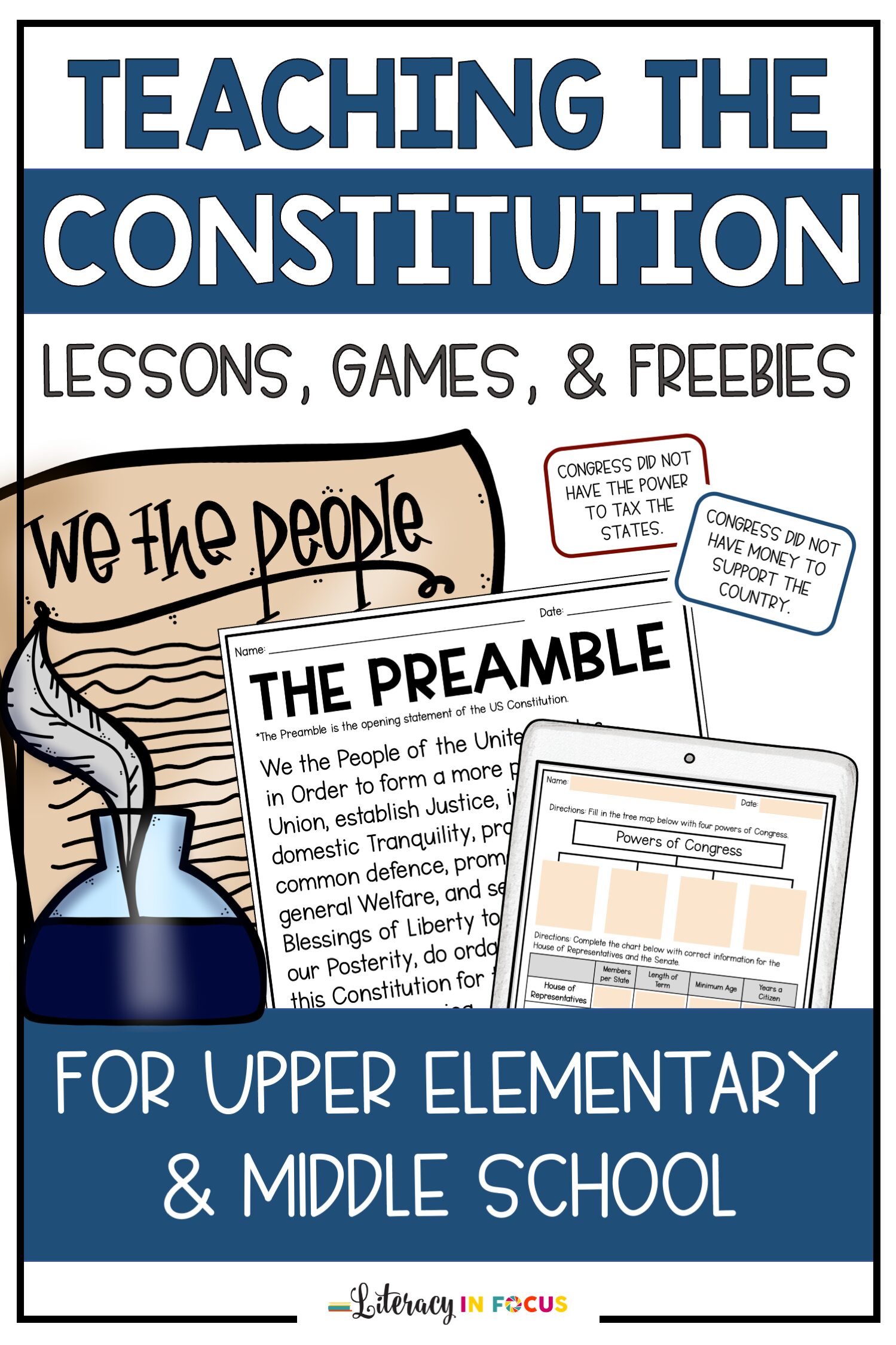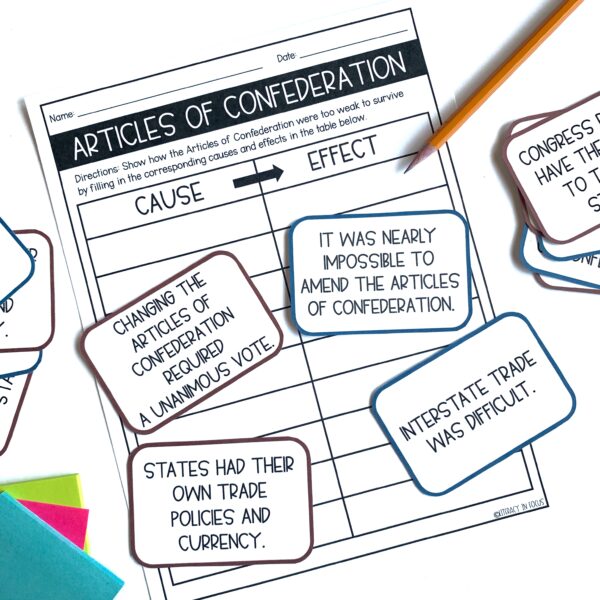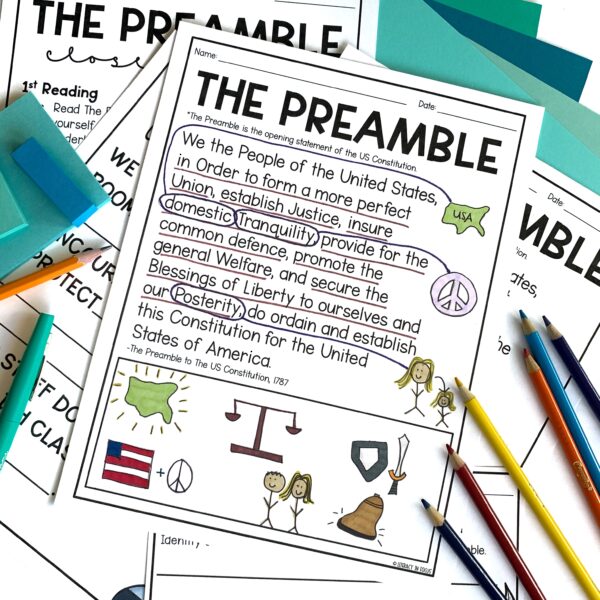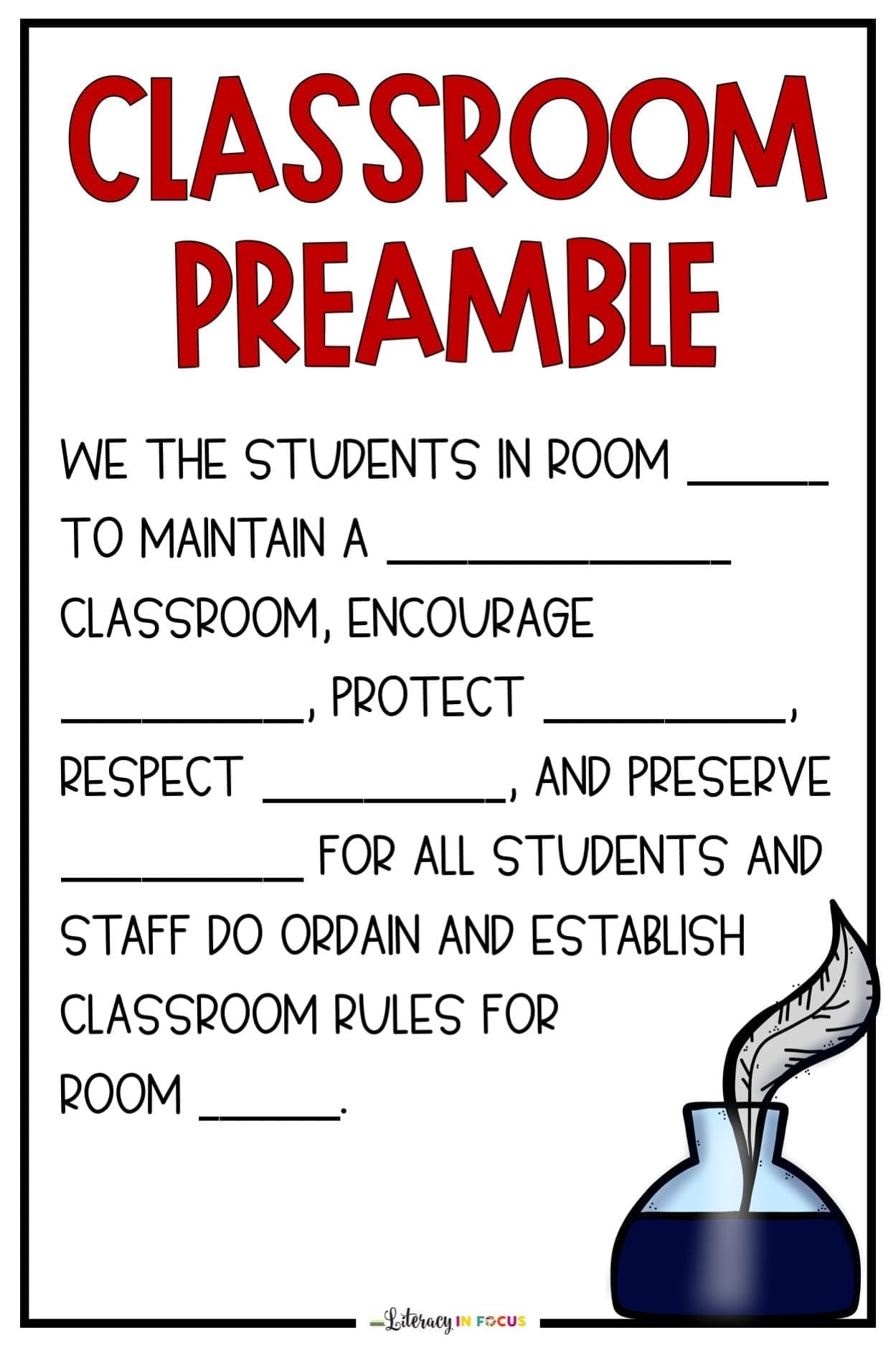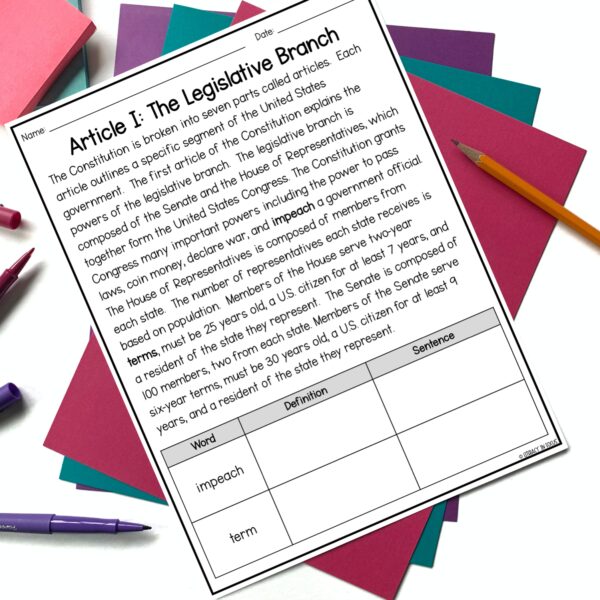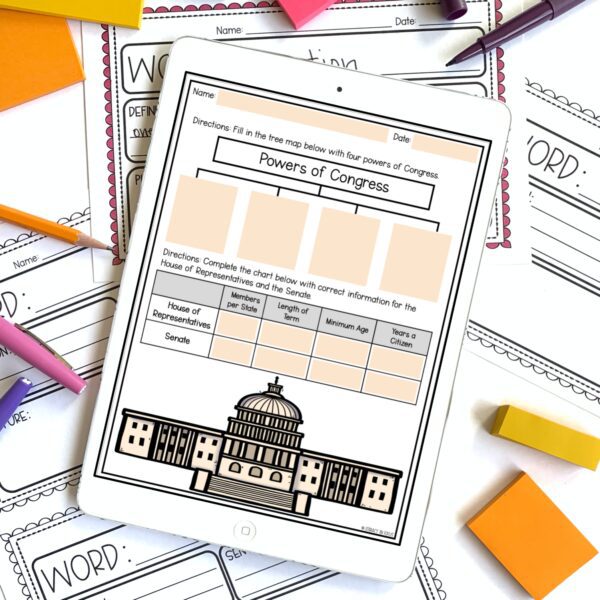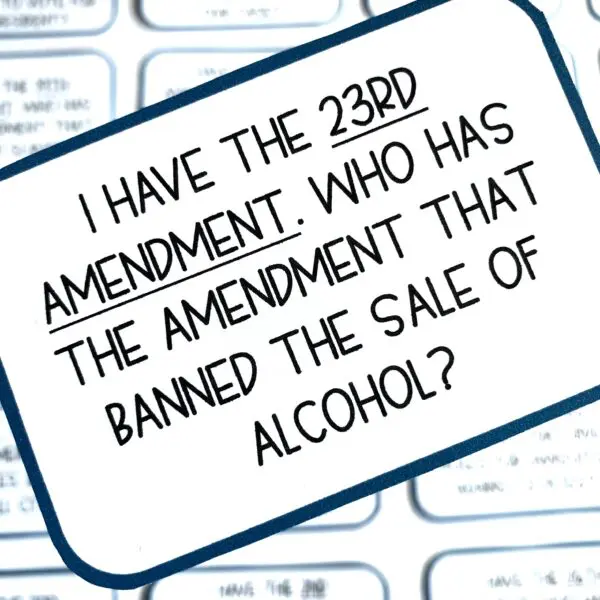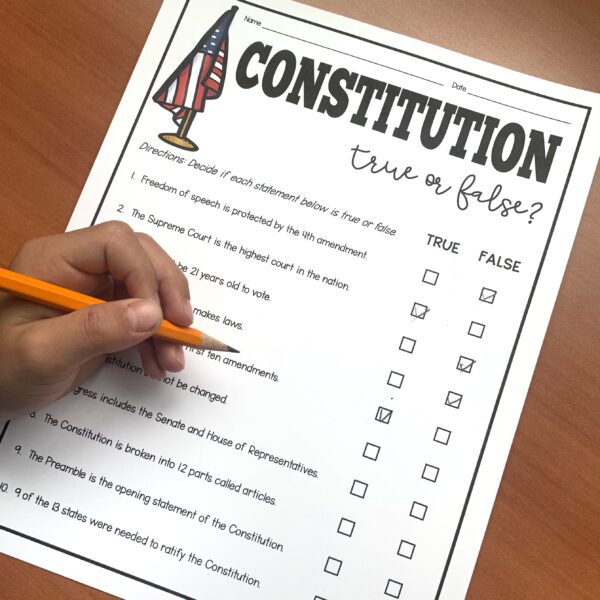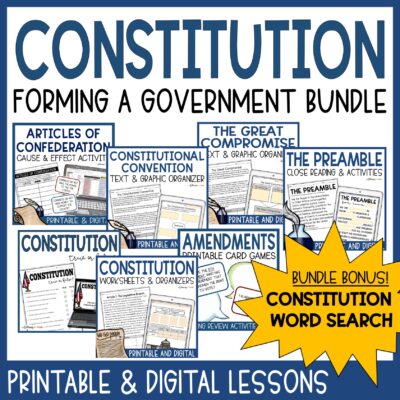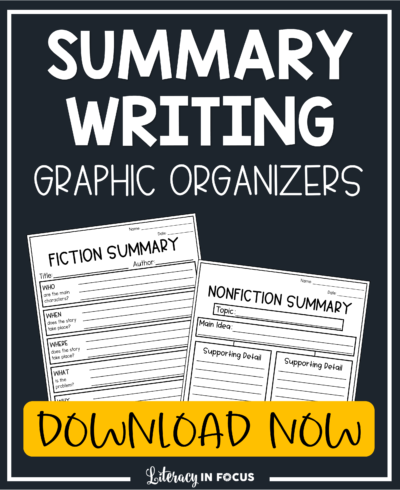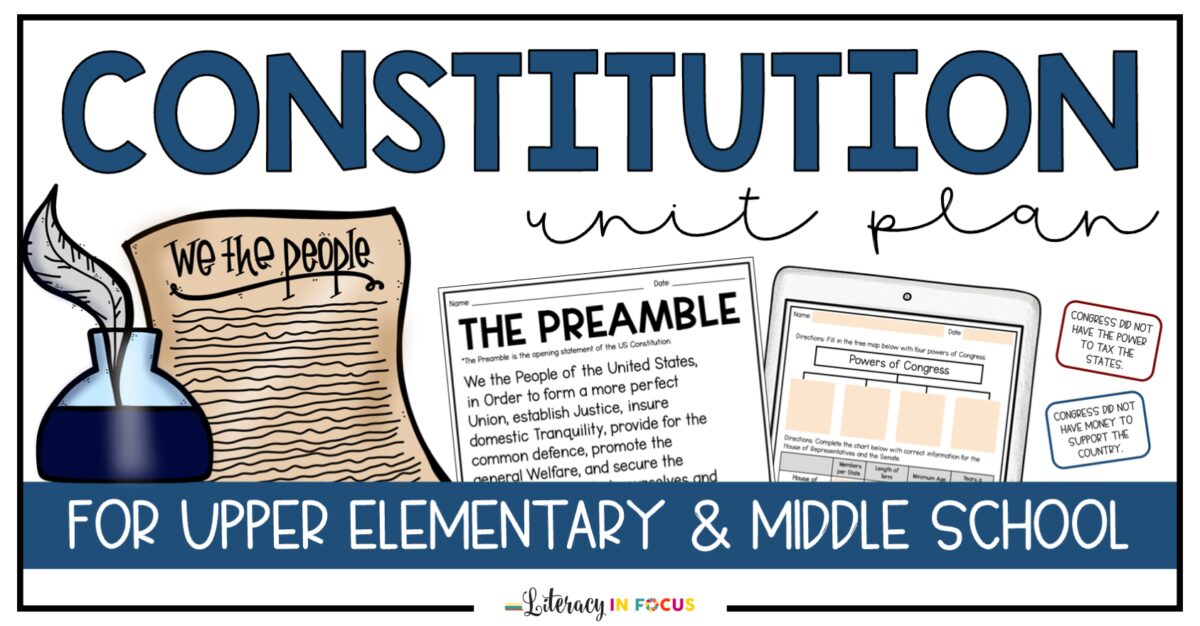
Constitution Unit Plan for Elementary and Middle School
Teaching the Constitution to middle grade students is not easy. The vocabulary is archaic, and it’s difficult to make the information interesting for young learners. To increase engagement and reach students of all levels and abilities, I break the unit into several digestible lessons, focusing on a different aspect of the Constitution for each one. The lesson plans, games, and ideas explained below are designed to provide students with a comprehensive understanding of the history, meaning, and importance of the US Constitution.
Articles of Confederation
Students identify weaknesses of the Articles of Confederation using cause and effect task cards. Manipulating the color-coded task cards helps students understand why a new framework for government was necessary. Providing students with a graphic organizer to record each cause and effect helps keep the information organized and provides a visual representation of each weakness. Click here to download the printable and digital task cards.
Federalists vs. Anti-Federalists
After identifying the weaknesses of the Articles of Confederation, it’s time for the Constitutional Convention and the Federalists vs. Anti-Federalists. I like to use a short text to introduce students to the purpose of the Constitutional Convention and opposing viewpoints. Next, students complete a compare and contrast graphic organizer to analyze the differences between the Federalists and Anti-Federalists. If your students are advanced, they can identify the differing viewpoints by listening to the “Federalists vs. Anti-Federalists” podcast from the National Constitution Center.
If you have extra time, you can have students research the framers. Pair up each student with one of the 70 Constitutional Convention attendees. Get the entire list of framers and their brief biographies from the National Archives “Framers of the Constitution.” Have students research their assigned figure and report back to the class on their findings. For a more structured approach to the research process, click here to download a FREE biography summary graphic organizer.
The Great Compromise
It’s important that students understand the purpose for creating the Senate and House of Representatives. To do this, I use a short text and graphic organizer that requires students to explain the Virginia Plan, New Jersey Plan, and Great Compromise. It’s a quick lesson, and it provides students with a solid foundation for learning more about the legislative branch.
The Preamble
I use a step-by-step approach to make sure students understand the purpose and meaning of the Preamble to the US Constitution. First, we complete a close reading of the Preamble. Each reading of the text is described below.
- 1st Reading: Students read the text silently to themselves and underline six purposes of the Constitution.
- 2nd Reading: Students listen as the Preamble is read aloud. While they are listening, students circle 3 unknown words. Students define each of the unknown words (using a dictionary) and sketch a picture in the margin to represent the meaning of each word.
- 3rd Reading: Students read the Preamble with a partner. When students have finished reading, they work together to sketch an image for each purpose of the Preamble they underlined during the first reading. When completed, they should have six total images.
To further ensure understanding of the Preamble, I use a task card activity. The task cards require students to match text from the Preamble to its corresponding meaning.
After the task card activity, we create a classroom preamble. Developing a classroom preamble provides students with a relevant connection to the actual Preamble to the US Constitution. It also gives students a sense of ownership over the classroom policies they follow each day.
Finally, I use an exit ticket to assess comprehension. The exit ticket requires students to identify one purpose of the Preamble as stated in the Constitution.
Click here to download the printable and digital materials for teaching the Preamble.
The Constitution
In order to make sure I don’t overwhelm students, I like to break down the Constitution into several digestible lessons. Each lesson includes informational text, vocabulary support, and a graphic organizer. Click here to preview printable and digital text and graphic organizers for the entire Constitution.
- Starting each lesson with informational text will give students a strong foundation to build upon as the lesson continues. It is important to select a text that is accurately leveled for your students.
- After reading the text, we dive deeper into the academic vocabulary. In the planning phases of the lesson, I select a handful of vocabulary terms I think are important for understanding the overall concepts. It is important for students to be strategic about the new vocabulary.
- The final part of the lesson relies on the use of a graphic organizer. The goal in using the graphic organizer is to help students identify the main points and clear up any misunderstandings. The type of graphic organizer used will be determined by the text. One piece of text might lend itself to a classification chart, while another might require a descriptive bubble map.
I break down the Constitution into the following lessons: The Preamble, Article I: The Legislative Branch, How a Bill Becomes a Law, Article II: The Executive Branch, Article III: The Judicial Branch, Checks & Balances, Federalism, Article IV: Relations Among States, Article V: The Amendment Process, Article VI: The Supremacy Clause, Article VII: Ratifying the Constitution, The Bill of Rights, Amendments 11-27
Amendments
Cement knowledge of the first ten amendments using real-world scenarios in Bill of Rights BINGO. Connecting each amendment to a relevant and applicable situation will help students comprehend and remember the meaning and purpose of each one. Get the entire Bill of Rights lesson plan, BINGO cards, and real-world scenarios from the National Constitution Center.
I use two different printable card games to teach students the 27 amendments. “I Have, Who Has…” requires students to get through all of the amendments as quickly as possible and in the correct order. “What Am I?” can be played as a whole class or in small groups. It requires students to identify the amendment being described. Click here to download both printable card games today!
Extension Activities
Constitution True or False?
Use this free printable and digital Constitution activity to reinforce learning! It includes a ten-question true or false worksheet and PowerPoint/Google Slides presentation! Click here to download it for FREE today!
Timeline
Have students create a timeline of events related to the Constitution, starting with the Constitutional Convention in 1787 and ending with Amendment 27 in 1992. Narrow the parameters by providing students with the events and requiring them to find and plot the dates on a timeline. Visit the World History Project for a complete list of possible timeline events to include.
Children’s Book
Clearly explain how the Constitution was created using a children’s book. A More Perfect Union: The Story of Our Constitution combines words and pictures to make a difficult concept accessible to all students. Extend the lesson by having students summarize the Constitution story using the 5Ws (who, what, when, where, and why).
Save time and download the complete US Constitution Unit bundle! It includes seven comprehensive US Constitution lessons and a FREE Constitution word search! Everything you need to teach the US Constitution is included with this printable and digital unit!
US Constitution Unit Bundle
I LOVE this resource! My students were completely engaged and enjoyed the activities. This resource breaks down the Constitution into smaller parts to make it easier for students to understand. This bundle has saved me SO much time, thank you! -Michelle R
This post contains affiliate links. Click here to read my affiliate policy.
